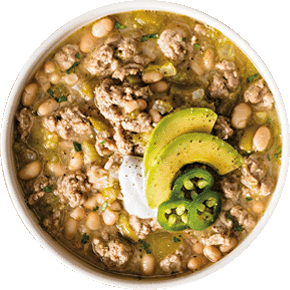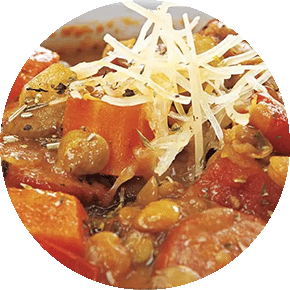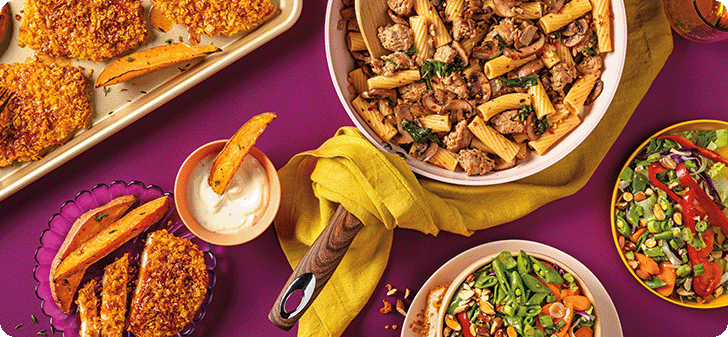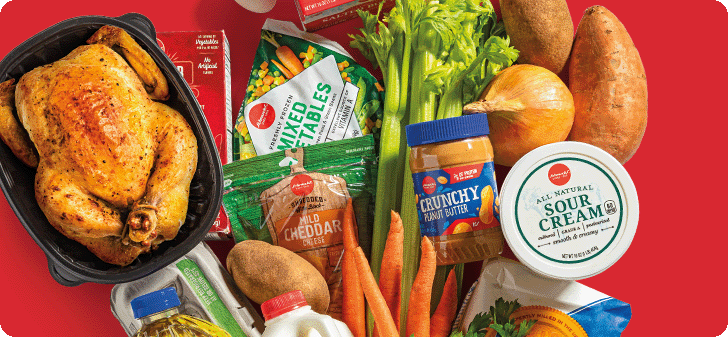Sub-Zero Savings
Whether you have a busy family or you're just cooking for one, it’s easy to stretch the life of your food (and your dollar) while also adding a bit of time back to your day. All it takes is a plan, a little prep and—most importantly—your freezer.
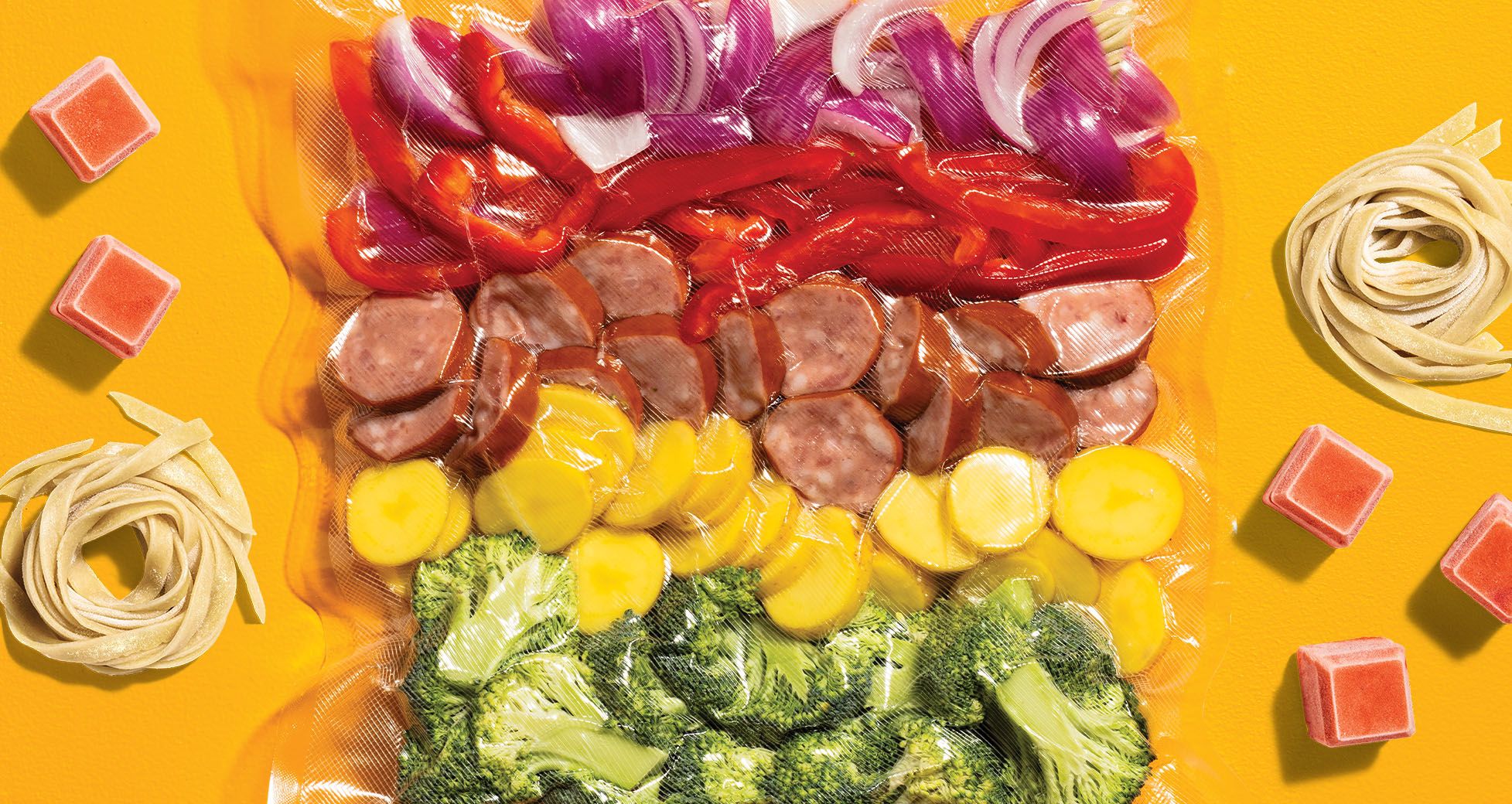
Seal the Deal
The most important aspect of freezing food is maintaining quality. After all, preserving all that protein and produce is only worthwhile if you actually want to eat it.
The most common culprit of frozen food waste is freezer burn. To avoid it—and make your meals last longer—you'll want to remove as much air from the container as possible. Because of this, freezer bags work better than plastic or glass storage containers in most cases.
While a proper vacuum sealer is the most efficient method, simply pressing as much excess air out of the bag as possible before sealing will work wonders.
A Little Prep Goes a Long Way
Prepping ingredients by washing, chopping and freezing is great for quick-cooking meals and will save you a lot of time, without having to cook anything beforehand.

Meatloaf
Prepare and shape your raw meat mixture and freeze. Be sure to thaw completely before popping in the oven when you’re ready to eat. Or, portion out the raw meat mixture into muffin-sized mounds and freeze on a sheet pan until solid. Then transfer to a freezer-safe bag and thaw individually as needed.
Cook Now, Eat Later
Fully cooking a complete meal ahead of time then freezing and reheating later is the ultimate time-saver! This works best for meals that don’t rely on a variety of textures.
Soups, Stews & Chili
Cooked soups can be frozen flat in freezer bags to be thawed and reheated later! Be sure to cool completely before bagging.
Casseroles & Bakes
Baking and freezing casseroles and bakes (such as lasagna or enchiladas) ahead of time makes for a super-easy weeknight dinner! Simply thaw in the refrigerator the night before and pop in the oven to reheat.
Single-Serving Meals
Fully cooking your meals and portioning into single servings is a great method for quick dishes you can pop in the microwave—perfect for a busy weeknight dinner or an office-friendly lunch!
Thaw is the Law
Thawing food facilitates quicker, more even cooking. Keep these rules in mind before preparing your next freezer meal.
Frozen raw meats should always be completely thawed before cooking.
The best way to thaw is in the refrigerator overnight; it requires a little planning but is the safest method. However, if you’re in a pinch, some items can be thawed quickly in cold, running water.
Never set frozen food out on the counter to defrost at room temperature, as it can spoil and cause food-borne illnesses.
The No-Freeze List
Although most foods can (technically) be frozen safely, some maintain their taste and texture better than others. Here are a few pointers on what to avoid:
- Fresh salads will become soggy from the dressing and limp from waterlogged produce.
- Pasta salads become soggy and mushy while the mayonnaise or salad dressing base can separate.
- Potatoes should only be frozen if they are cooked or partially-cooked (blanched).
- Seasonings like garlic, cloves, onion, paprika, curry and a variety of herbs can alter their flavor in the freezer and become much stronger. When using herbs and spices in your meals, season lightly before freezing and add additional seasonings later, when reheating.
- Eggs can be a little tricky. To freeze raw eggs, crack them out of their shells and whisk together the whites and yolks—or, freeze the whites and yolks separately, whisking the yolks with 1⁄8 teaspoon salt per every four yolks to keep them from gelatinizing. Avoid freezing cooked eggs unless they are scrambled.
- Produce with high water content such as celery, cucumbers and lettuce becomes limp and waterlogged.
- Cream or custard used in sauces or pie fillings and baked goods separates and becomes watery and lumpy.
Perfect Your Pasta
If one dish comes to mind for a frugal, filling meal, it's pasta. And although preparing it isn't the most elaborate task, every minute counts when getting food on the table for a busy family. Enter: frozen pasta. Even though those noodles can get mushy if not frozen correctly, fantastic once-frosty fettuccine is indeed possible.
Step 1
Cook pasta to just under al dente. When reheating at meal time, noodles will finish cooking while maintaining their shape and texture.
Step 2
When you're ready to freeze —toss pasta with a little olive oil before spreading onto a parchment-lined baking sheet. Freezing noodles this way allows them to maintain their shape while keeping them from sticking together or breaking. For longer noodles, swirl them into small nests for easier storage. Once frozen, simply transfer pasta to your preferred container.
Step 3
Freeze homemade sauce in ice cube trays to form individual servings that can be paired with frozen pasta.
Step 4
When you're ready to eat, the frozen pasta and sauce can be thrown in a skillet right out of the freezer—no thawing necessary. The warm pan will heat everything through in minutes, and viola ! You've got yourself a delicious, satisfying meal in no time.





